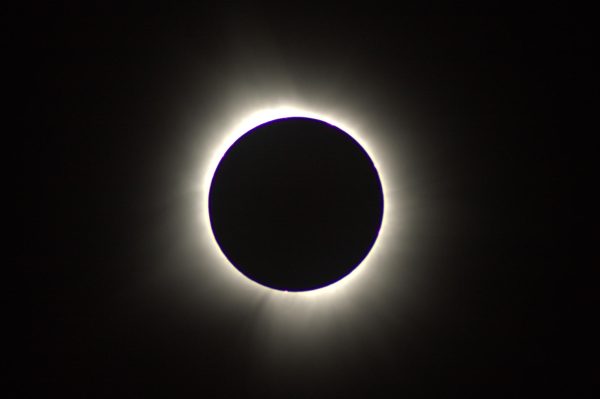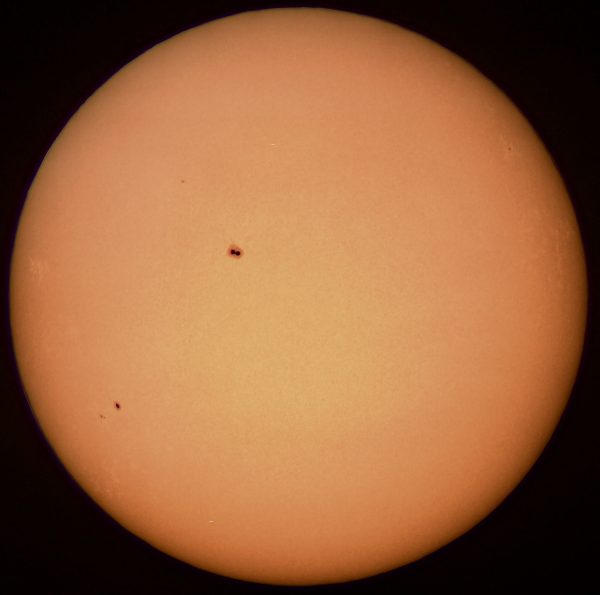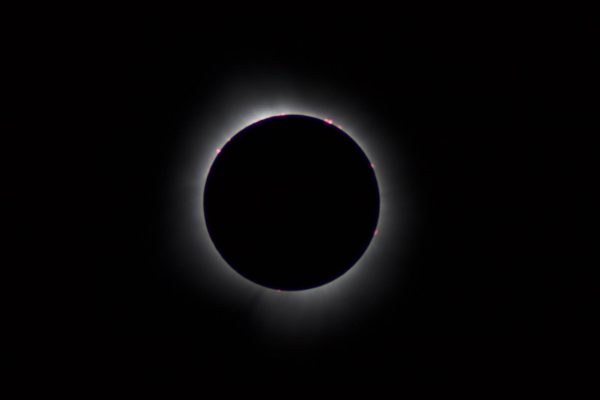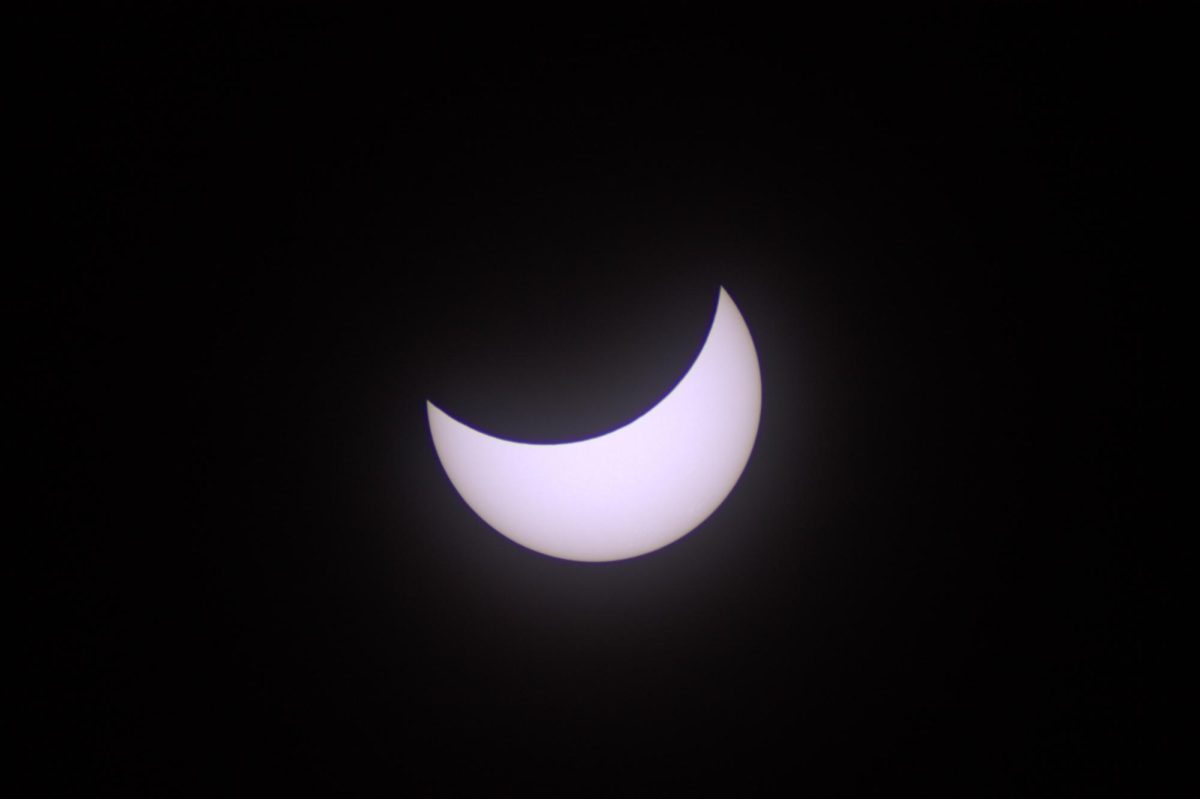
11,597 days, this is the amount of time that will pass to experience the next total solar eclipse from North America. Monday, April 8 marked history as the first total solar eclipse visible from Indiana since 1869.
Monday demonstrated a total eclipse which is when the moon, orbiting Earth, passes directly in front of the sun. The moon crosses the sun’s path around once a year, but since the orbit of the moon is at an angle, the shadow cast from the moon usually misses Earth. Around every 20 years, the moon crosses the sun at just the perfect angle to cast a shadow across the surface of the Earth around 115 miles wide.
The parts of Earth lucky enough to view April’s total eclipse in full were Canada, Mexico and the United States. The states included in the path of totality were Texas, Arkansas, Illinois, Indiana, Ohio, New York, Vermont, New Hampshire and Maine.

This past eclipse was truly remarkable. The sky was clear in Indiana and a full diamond ring eclipse was on display for

around three minutes. The once-in-a-lifetime event left an impression on people all over the continent. Between the sky getting dark in the middle of the day and the temperature dropping around five degrees, the celestial occurrence was unlike anything normal on this planet.







